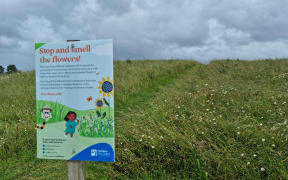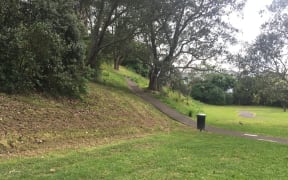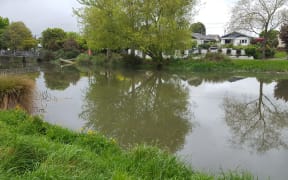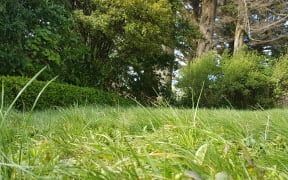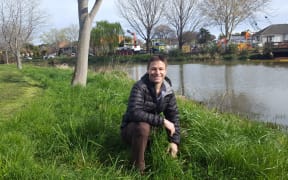
Mangaiti Park in Huntington. Photo: Libby Kirkby-McLeod / RNZ
A wildflower and no-mow trial in Hamilton parks and reserves has shown good results, but whether it will be repeated is still to be decided.
Hamilton City Council allowed the grass to grow in parts of 13 different parks, including about 1 percent of the green space, which was usually mowed over the summer months.
The initiative, which ended in January, wanted to see whether rewilding these areas would enhance biodiversity, create spontaneous play opportunities in these parks, and reduce greenhouse gas emissions from mowing and associated activities. The results showed it did achieve all these aims.
Hamilton City Council parks delivery manager Duncan MacDougall said it was a relatively inexpensive trial to run.
"We approached it with a bit of curiosity, rather then thinking 'this is what's going to happen'," he said.
The council collected biodiversity data which showed vegetation, insects, fruit and flowers increased in abundance in the no-mow areas compared to regularly mowed areas, including an increase of about 6000 percent in vegetation in these parks.
They also collected visitor information, which showed each of the trial sites during the experiment received more visitors and provided a different and unique experience from the usual parks.
MacDougall points to one of the parks involved, Mangaiti Park, which had an increase of about 231 percent in visitors between 1 October 2023 - 1 January 2024 when compared to 2021 numbers, and a 680 percent increase when compared to the same dates in 2022.
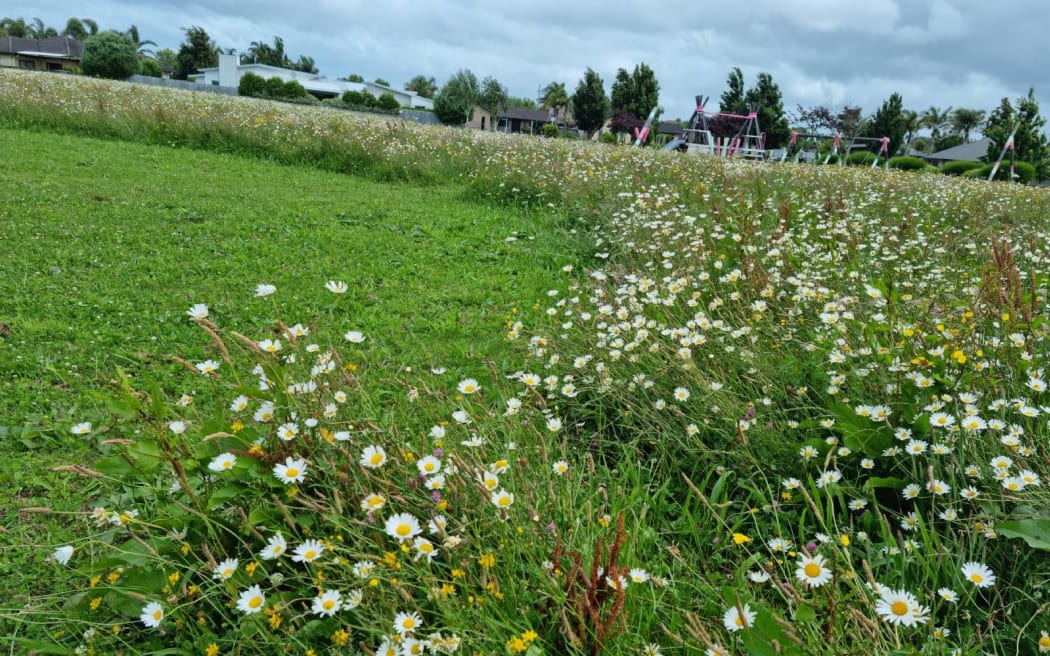
Mangaiti Park in Huntington. Photo: Libby Kirkby-McLeod / RNZ
However, the council did receive back a couple of surprising results. For example, where it added wildflower seeds to some of the meadow areas.
"The team have seen what the Christchurch City Council had done in the northern area of Hagley Park and we were hoping some of the sites we set up would look like that," MacDougall said.
However, the areas where council added wildflower seeds did not look much different to the areas where the meadows were established with the natural seeds in the soil.
MacDougall said they would reach out to Christchurch to see what they could do differently if adding seeds again.
At the beginning of the trial, some residents expressed concerned the long grass would attract litter. That did not turn out to be a problem, according to the council.
"When we went and did a sample to see how much rubbish was collected within an area there wasn't quite as much as we thought there would be, and there wasn't much more then if you took a sample in a mown area," he said.

Mangaiti Park in Huntington. Photo: Libby Kirkby-McLeod / RNZ
Residents also had concerns about the meadows being a fire hazard. MacDougall said the council took this seriously and they monitored it throughout.
"Nearing the end it was drying out quite quickly, so some sites we did take down a little bit earlier, because they could potentially have been a fire hazard."
MacDougall said they had not had a chance to consider whether they would do it again, though he would like to.
"We would take all the feedback and recommendations we got from the community into account for it this time."
Whether to repeat or extend the no-mow initiative would probably be decided by the end of June, he said.
